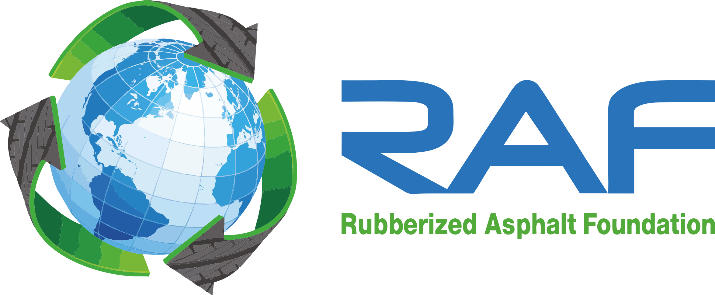- What are RAF’s goals as a research-based foundation?
RAF’s ultimate goal is to expand knowledge on the beneficial use of recycled tire rubber in asphalt mixes, chip seals, stress absorbing membrane inter-layers, pavement preservation systems, and other asphalt pavement applications.
The foundation also encourages scientific discussion and the exchange of ideas through various forums (workshops, meetings, webinars, conferences) to enhance the study of such materials.
- What is RAF’s approach to advancing the science of rubberized asphalt?
RAF has assembled leading international experts from academia, government and business to lead the focus on integrating recycled tire rubber in asphalt applications.
RAF’s advisory board will conduct research studies to expand the knowledge of rubberized asphalt engineering, as well as present their expertise at events that will enhance this ongoing discussion.
RAF promotes the study and research of rubberized asphalt through the creation of white papers, scholarships/fellowships, and to the extent possible, the commission and/or funding of research in the field.
- What does RAF contribute to the paving industry and engineering fields?
The foundation provides current, objective data on the evolving use of recycled tire rubber in asphalt and practical specifications that enable its successful use. Where rubberized asphalt may appear unsuccessful, analyses will determine mistakes in order to improve understanding and use in future applications.
Additionally, RAF is able to examine and validate current and emerging technologies that provide engineering solutions to pavement materials and maintenance engineers, as well as project owners.
- How is RAF different from other organizations focused on rubberized asphalt?
RAF is developing a robust online library featuring research publications that demonstrate specific and quantifiable benefits of various asphalt mixes and pavement preservation strategies.
RAF has gathered current information on projects, studies, specifications and other data that is valuable to professionals exploring and/or deciding on the use of recycled rubber in asphalt.
The foundation’s searchable online database is catalogued for usability, and is updated with the latest developments in rubberized asphalt technologies and processes.
- Why is recycled tire rubber a viable alternative to conventional asphalt additives?
Tire rubber is the result of decades of research and development aimed at creating a material with a singular focus – durability. Scrap tires serve as a vast resource of durable recycled rubber that exhibits many of the same properties as the oil-based polymers conventionally used as asphalt additive.
With continuous advances in rubberized asphalt, engineers have captured the practical benefits of tire rubber in asphalt applications to provide greater crack resistance and durability. But the benefits of rubberized asphalt extend beyond durability to include cost savings, safety and noise reduction.
Plus, for a 1-mile section of four-lane highway up to 8,000 tires are repurposed for beneficial use.
- Why is rubberized asphalt more cost effective than conventional asphalt?
There are four primary ways to save money with rubberized asphalt.
- Rubberized asphalt requires less pavement thickness to withstand the same amount of traffic loading than conventional asphalt.
- Using recycled tire rubber in place of oil-based styrene butadiene styrene (SBS) reduces asphalt mix costs by $2 to $5 per ton.
- Rubberized asphalt roads require less maintenance over time, reducing the hours road crews spend on repairs and the amount of materials required to patch defects.
- When rubberized asphalt friction courses are used in conjunction with sound walls in traffic noise mitigation plans, the cost of wall construction can be significantly reduced.
- Why is rubberized asphalt safer than conventional asphalt?
Friction courses applied as thin, hot-mix overlays have stones in the mix that are crushed to a uniform, single size that results in an “open” texture. Pockets and pores in the material allow water to flow through the mix, creating less of a chance for drivers to skid and hydroplane.
A study by engineer Gary Fits, P.E., of the Asphalt Institute, examined rainfall and the number of accidents for a year before and after a concrete highway was resurfaced with rubberized asphalt friction course on I-35 in San Antonio, Texas. Even with 30% more wet weather days in the year after the overlay, the number of accidents on wet weather days were reduced by more than 50%.
